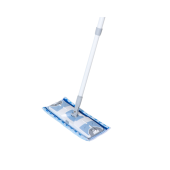Stakeholders must move fast to meet commercial expectations. How fast is too fast? Fast procurement with tactical sourcing may leave more on the table than you think. Today, we investigate tactical sourcing and if its speed advantages outweigh strategic sourcing’s long-term benefits.
- Definition of tactical sourcing
- How tactical sourcing differs from strategic
- The merits and downsides of tactical sourcing
- The advantages of strategic sourcing
- How technology helps small firms strategically obtain commodities
What is Tactical sourcing?
Tactical sourcing involves buying goods and services quickly without following an organisational sourcing strategy or process.
Many companies use tactical sourcing and short-term fulfilment for most orders. Transactional sourcing has its place in an organisation and is occasionally appropriate, but relying only on it wastes money and leverage on strategic opportunities.
The tactical vs. strategic sourcing difference
The stakeholder or team’s immediate requirement drives tactical sourcing purchases. These people research suppliers and arrange purchase orders and deliveries.
Since startups and small businesses don’t have a procurement team to do market research and spending analysis to develop an order process, they use this type of sourcing more often.
Strategic sourcing considers the organization’s overall demands. RFPs and competitive analyses of several providers are used for more extensive investigation and examination. Strategic sourcing uses long-term contracts with volume pricing and strong supplier connections to improve results. Finance, Legal, and Security departmental due diligence and approvals are also typical.
Strategic sourcing prioritises stakeholder and organisational demands over speedy delivery.
Pros and cons
In some cases, tactical sourcing is useful. However, solely using it for procurement harms the company’s long-term finances. Too much tactical spend often results from a reactive approach to supply chain demands, thus understanding spot buys and transactional buying is vital to long-term success.
Consider these variables while choosing a new purchase strategy. They may also aid procurement policymaking.
Pros of tactical sourcing:
- Quick: Transactional purchasing requires less due diligence than strategic sourcing. Buyers select a supplier who has the things they need, investigate the product and cost, reach a deal, and place a buy order. These purchases may not undergo Legal or Security approval, reducing closure time.
- Targeted: Buyers acquire the stuff they want from their seller. Similar solution research may be included in this purchase. Stakeholders often investigate and present solutions to managers for approval.
- Agile: Transactional buying is less constrained than strategic. Thus, it is more flexible than sourced procurement. Transactional buying does not guarantee vendor availability, but many stakeholders switch to other known or new vendors if the initial seller cannot meet demand.
Tactical sourcing drawback:
- Higher cost: Transactional tactical sourcing eliminates pricing negotiations. Although consumption patterns allow volume negotiations, stakeholders generally pay the list price for supplies since purchase is a single event rather than a long-term relationship.
- Less stable: Transactional purchase may not have items when needed. This forces stakeholders to find alternative supplies. Tactical sourcing for mission-critical or hard-to-find items may cause supply chain friction.
- Threats: Stakeholders commonly deal with unknown senders in tactical sourcing. Legal and security assessment may be sacrificed for transactional speed in tactical sourcing. These situations increase third-party risk. Using reputable dealers lessens this danger.
Questions to ask before considering buying
Understanding the urgency and motive behind a transactional purchase can assist stakeholders decide if self-service, tactical procurement is best.
- How urgent is this purchase?
- Are tail expenditure or spot-sourcing policies in place?
- Does Procurement/Finance know about the purchase? Has spending been approved?
- Is this a project-related or overhead spending request?
- Does this buy have a higher total cost of ownership?
- The desired supply or service: how specialised?
- Why now for the purchase? Could a supplier shortage with your regular provider mitigate the situation?
- What are these supplies’ typical lead times?
- How confident are you in these item contract negotiations?
Taking time to contextualise the purchase avoids a tactical approach when a long-term plan may produce greater outcomes.
5 reasons to prefer strategic over tactical sourcing
There are times tactical sourcing is important. It may assist stakeholders address unexpected needs or supply chain issues. Overall, strategic sourcing gives greater benefits that justify the longer duration.
- Good supplier relations
Relational vendor partnerships have several advantages over transactional ones. Contracting with a supplier for one or more years ensures buyers a specific quality of service and vendors a guaranteed level of money. Quality vendors who contract with an organisation typically go above and above to preserve the account by providing high-quality products and services.
- Greater buying power
Strategic sourcing needs stakeholders to sacrifice adaptability. By combining purchases with one vendor, stakeholders get better-negotiated prices based on contract length, volume, logo recognition, and other criteria. Thus, strategic sourcing outperforms transactional procurement in cash performance.
- Simplified procedure
Transactional buying means starting over every time. Strategic sourcing gives stakeholders several ways to streamline purchases. This could be a one-time Legal and Security evaluation or an integrated payment process to automate accounts payable.
- Lower third-party risk
Strategic sourcing strengthens vendor relationships. This lowers procurement risks like quality difficulties, delivery delays, security concerns, and fraud. Strategic procurement allows supply chain management to safeguard the supply base and analyse supplier performance.
- Inventory assures
Supply procurement issues can be avoided with proactive supplier relationship management. It cuts essential supply lead times and ensures availability. Hiring a preferred supplier lets your vendors see demand, balance inventory with expected needs, and ensure rapid availability.














